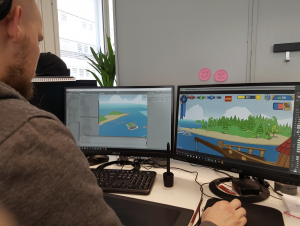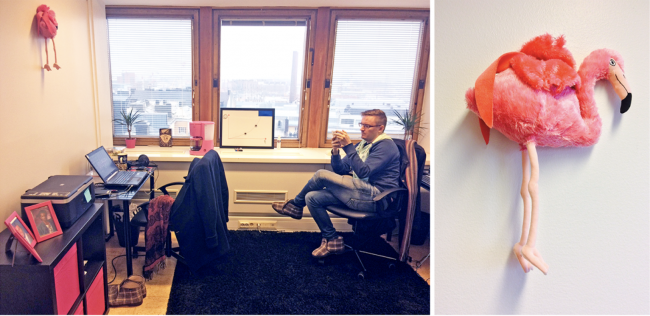The Maturing Mobile Market: Learning the art of Games as Service
This two-part series explores the modern practices in mobile game development by interviewing 9 mobile game studios. The work is based on a Aalto University master’s thesis Conquering the Mobile wherein you can find detailed references to cases and articles.

Interviewing Studios from Finland
Let’s frame the discussion with a brief overview of the mobile game industry. In the 10 years since the release of iPhone, smartphones have established themselves as the largest gaming platform both in terms of the number of users and revenue. This has led to fierce competition reflected in the huge number of games released. To date, efforts to understand and compare how mobile game development companies operate hasn’t been established.
Managers and professionals in nine small and medium-sized Finnish game studios agreed to participate in the interview study. The studio and their release history was explored to unpick what worked and what didn’t. This resulted in 120 pages of text and notes that was thematically analyzed. It was agreed that the quotes would be anonymized for this article.
The geographical areas, state of development (development, soft launch or live) and genres all varied greatly. 8 out of 9 companies deployed the free to play (F2P) business model. Experience varied considerably, with some working on their very first game and others having had a large number of successful or killed projects.
The game comes first
Experience in the industry was one of the most considerable factors that affected how the studio framed and approached production. The younger companies focused on the art form of game development: creating the game itself. This meant, evaluating the scope of the project took longer and difficulties occurred later in development. These experiences made those companies choose more manageable projects:
“Making our first game taught us the process of making games from zero to hundred, from beginning to the end, the whole process of designing, developing, and publishing.”
This product-oriented approach, while narrowly focusing on game development, led the studio to pay less attention to factors outside their immediate sprint plans. This is reflected in the origin of ideas too. The projects were often inspired by the emotional drives and gaming preferences of the team. The companies paid less attention to evaluating the competitive landscape and the target audience. One studio found this approach led to challenges in user acquisition:
“Only a few people enjoy this genre and I couldn’t define them. We should have asked someone with more experience whether making this game made any sense.”
Product-oriented approaches don’t view the game as a service. This led to challenges keeping the players engaged over time, difficulties in creating mechanics that would bring the players back to the game:
“Our game was pretty much a standalone offline game. There are leaderboards and social maps, you can see where your friends are. But it clearly wasn’t enough of a service for a free to play game”
If the studio was successful with their initial launch, they were likely to continue and put their faith in the game itself rather than targeting a chosen market or audience. These companies sought to create ‘a great game’:
“We have made this game for anyone between 12-65 or 12-80 – well, whoever wants to play it. Perhaps the youngest might be out, but the game’s so simple to play that perhaps even the elderly might play it. We haven’t focused on this topic too much. When you make a good game it will sell.”
When the production-oriented approach led to challenges, the studio began to pay attention to the problems. Often, this meant considering the game as a service and paying attention to factors outside of the game itself such as, user acquisition, marketing channels and partnerships:
“We think of these things more from a product management perspective: which markets you should go into and which are not worth it, how to reasonably acquire users, and how to design monetization.”
Young and small companies focus on game development, it is the very core of their competencies. Younger companies were also considerably smaller than the more established ones. This required everyone to be hands-on in the development leaving less time to consider long-term strategy or industry changes. Possibly small companies found a competitive advantage in their ability to rapidly adapt and pivot. To avoid oversight the company should, however, pay sufficient attention to broader business context to validate their design with the target audience.

Service-driven approach emerges
As companies gained experience, their thinking expanded from development to considering the business as a whole: they began to emphasize pre-production and product strategy. From the very first steps, the companies sought to design an on-going service to meet higher business goals:
“Before we ever start making a game we strive to think about the market. Only then do we consider the game concept. You can also challenge this and go development first, and then build towards product management and monetization. However, I claim, that you should first think about the business and then development.”
Experience led companies tend to expand their focus from the game to user acquisition, monetization and retention. The companies also appreciated they not only need to attract players but also keep them engaged with the game over time:
“There has to be something going on in the game to keep the players engaged: the games evolve in the market after the release.”
Monetization was often among the most difficult of the three, and companies took various approaches to tackle it. One studio optimized their monetization in excel, another sought to design monetization at all stages through prototyping:
“Really good monetization design is at the core nucleus of your game. You have to figure out what you are selling and how you make the player feel it has value. – – We were able to establish the hook for monetization right from day one: this is the game and this is the thing we sell.”
The company thinking also opened to pay more attention to the players, designing for a specific target market:
“The psychology of the player you are aiming at is very important. If you are making a competitive shooting game, you do not want super casual stuff in it that would appeal to 40-year-old soccer mom. Doing that will dilute your message and the game.”
Overall, there was no one-size-fits-all model to development which reflects the divergent practices of the young industry. The companies all worked with their own somewhat tailored development principles. One of the companies explained:
“We split our mobile games into three parts: The core gameplay, meaning the actions I take with my fingers. The metagame that includes the goals of the game through weeks and years. Then social or live layer: when the player can find friends, tournaments, something that is happening right now.”
This company viewed core gameplay as the most challenging aspect. Creating the metagame and social features contributed most towards the longevity of the game but they were more routine to develop.
However, the companies shared a growth trajectory as they gained experience and grew: they turned from a product focus to a business focus. The companies began to more and more carefully formulate business cases gathering information and analyzing the competitive games, genres, and markets. One studio focused on underserved audiences hoping this would facilitate user acquisition. Another aimed at creating new genres in order to avoid competition, and a third created strategic partnerships to facilitate marketing. This rationalization is similar to what occurred in the classic video game industry in the 90s.
Learning to think holistically
If the studio were a mind-map, the experience increased the number of nodes and the associations between them. This growth allows anticipation of future needs in production rather than reacting to challenges. This proactive stance may help the studio prevent some problems from ever occurring.
A novice has to pay close attention to their performance. As their skill increases, the basic tasks become increasingly automated. This reduces cognitive load and frees attention to consider the broader picture. The growing expertise allows flexible performance in novel situations and complex environments of which mobile game development is distinctly a part of.
For an individual, learning is related to increasing skill and expertise. For a studio, it is a shared competency that is more than the sum of individual performances. The company competency is related to its ability to coordinate their efforts and harmonize the skills and resources at their disposal. Prahalad and Hamel describe that over time companies may develop core competencies lead to a competitive advantage:
- Experience allow companies flexibility to create not one game, but a variety of games specified to an audience, market or underserved segment.
- Experience guides the companies to constantly pay attention to the user satisfaction helping avoid designs that do not fit their audience.
- Experience is difficult to imitate as it is embedded in the complex systems within the organization, culture, and its people.
How can your game studio mature?
All studios gain experience by making mistakes. Great studios learn from their mistakes and build them into the core competencies that differentiate them as a business. Learning that the game itself is only half of the battle in building a successful product, the best companies look out at their competitors, market and what the audience is playing. When thinking about your next project, be humble and consider it in terms of the broader business environment. Reflect and learn from the past projects and seek feedback early and often. It is better to make the mistakes in the planning phase, not on the app store. Can you identify your mistakes?
Lauri Lukka is a Helsinki-based game designer and psychologist focusing on strategic, user-centered design.





